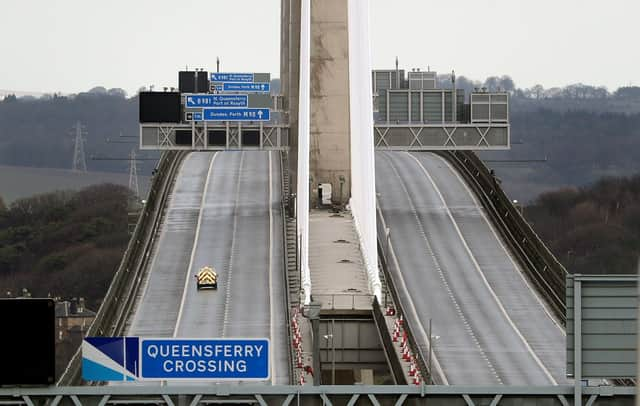Research to prevent ice build-ups on the Queensferry Crossing will take place this year, the Transport Secretary reveals


Coating the bridge's cables with a hydrophobic material or installing de-icing systems have been suggested as potential solutions to keep traffic moving on the bridge.
Michael Matheson the Transport Secretary, updated MSPs on Holyrood's Rural Economy and Connectivity Committee on Wednesday.
Advertisement
Hide AdAdvertisement
Hide AdDiscussing the research planned for this year, he said: "It's looking at the possibility of hydrophobic coating on the cables, it's also looking at a different type of de-icing system that could potentially be deployed.
"The intention is that some laboratory research will be carried out later this year to test out these options.
"And then potentially, if they indicate they could be helpful, there is a possibility that we may be able to deploy a couple of pilots for next winter."
The news of the research comes after the £1.35 billion bridge over the Forth was forced to shut for two days last year when ice built up on its cables amid wintry conditions.
Eight vehicles were damaged by falling chunks of ice.
Advertisement
Hide AdAdvertisement
Hide AdMr Matheson told the committee the process of diverting traffic to the older Forth Road Bridge if the Queensferry Crossing had to close took around five hours, with the Kincardine Bridge used in between.
Most cable-stayed suspension bridges around the world deal with ice build-ups by putting diversions in place, he said, but research will take place this year on alternative solutions for the Queensferry Crossing.
He said: "The good thing is that the Queensferry Crossing is a much more resilient crossing than the Forth Road Bridge.
"The number of occasions where the Queensferry Crossing has still been operational and open to high-sided vehicles compared to the Forth Road Bridge - it's night and day, it's been transformational."
Advertisement
Hide AdAdvertisement
Hide AdRefurbishment work on the Forth Road Bridge means it is now "up to its expected standard", he said.
The Queensferry Crossing and Forth Road Bridge are maintained by Bear Scotland, which has previously said it wants to find a long-term solution to preventing ice build-ups.
The company is looking into methods of vibrating the cables, ultrasonic de-icing systems and robotics as potential solutions.